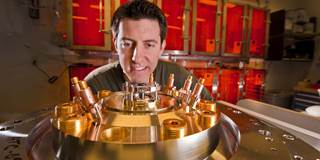Even if world leaders reach an agreement at the UN climate conference in December to reduce greenhouse-gas emissions substantially by 2050, the question of how to meet a booming global population’s insatiable appetite for energy in the longer term will remain. One of the most promising options is nuclear fusion.
LONDON – This December, world leaders will gather in Paris for the United Nations Climate Change Conference, where they will attempt – yet again – to hammer out a global agreement to reduce greenhouse-gas emissions. Despite the inevitable sense of déjà vu that will arise as negotiators struggle to reach a compromise, they must not give up. Whatever the political or economic considerations, the fact remains: if global temperatures rise more than 2˚C from pre-industrial levels, the consequences for the planet will be catastrophic.

LONDON – This December, world leaders will gather in Paris for the United Nations Climate Change Conference, where they will attempt – yet again – to hammer out a global agreement to reduce greenhouse-gas emissions. Despite the inevitable sense of déjà vu that will arise as negotiators struggle to reach a compromise, they must not give up. Whatever the political or economic considerations, the fact remains: if global temperatures rise more than 2˚C from pre-industrial levels, the consequences for the planet will be catastrophic.